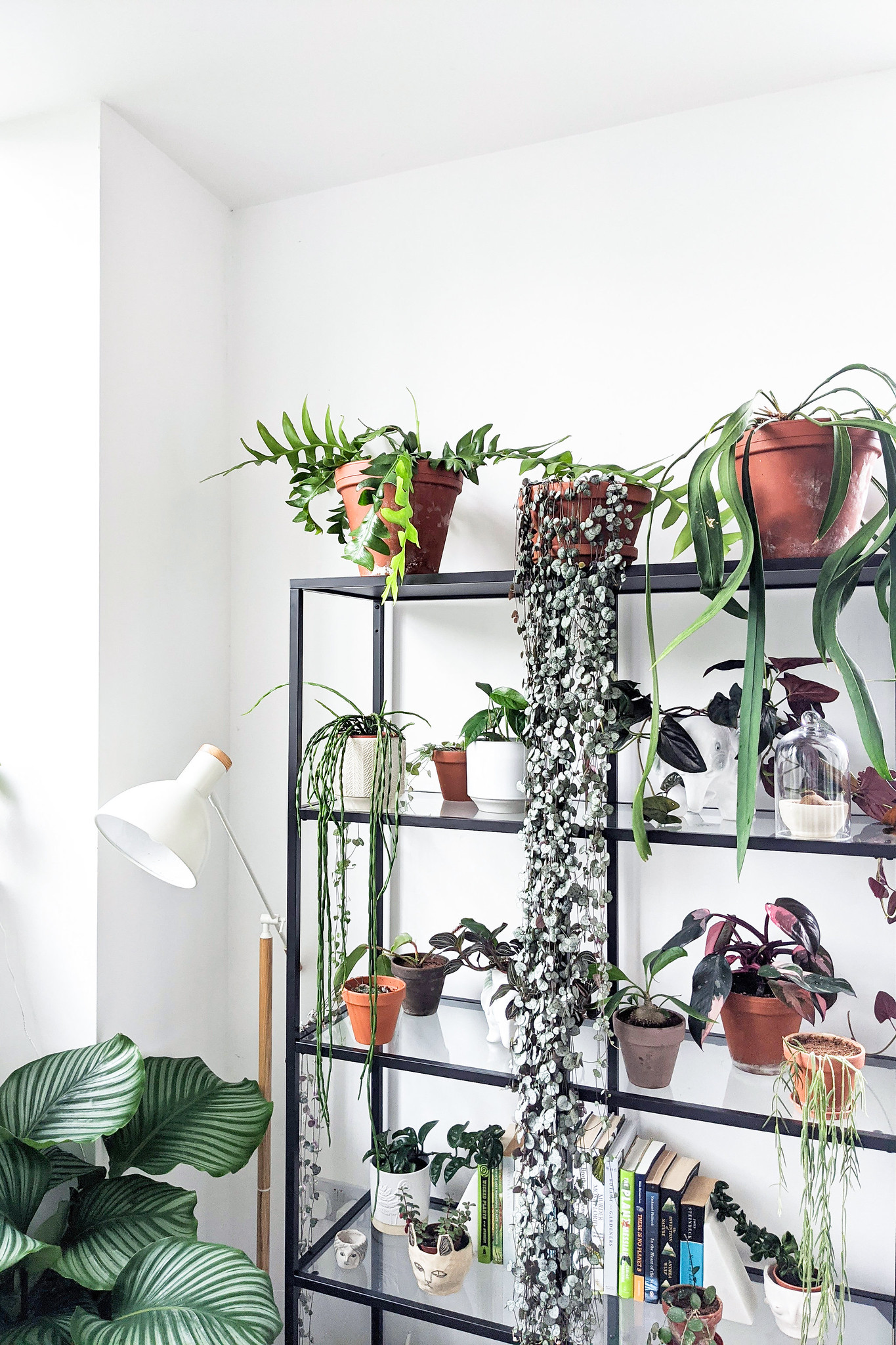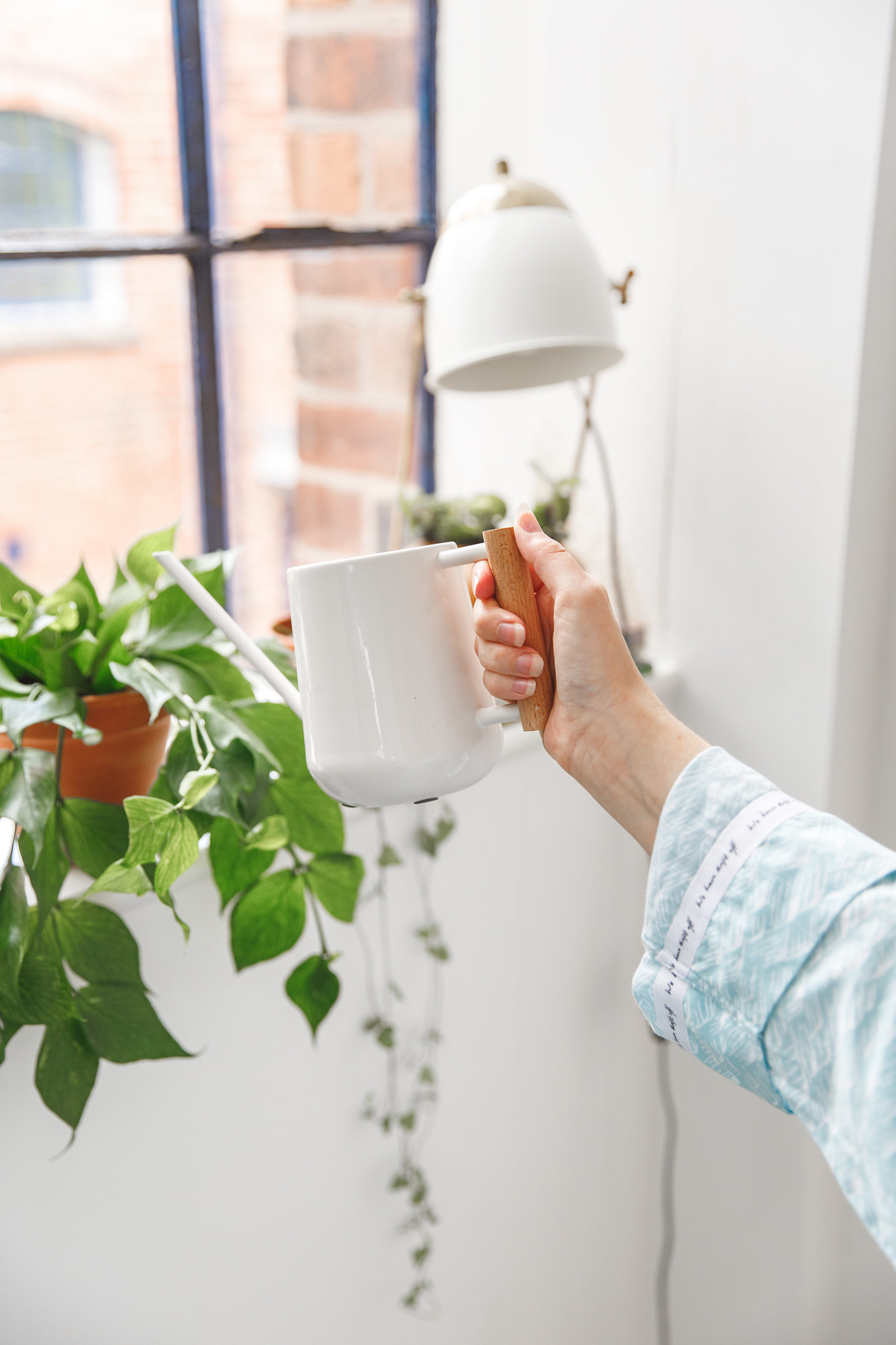
The shorter days and cooler temperatures really slows the growth of our house plants down to almost a standstill. If you're lucky and we have a warmer winter, your plants might continue to grow just a little over the next few months. Chances are they'll rest up until spring and because of that your care for them will need to change. That doesn't mean ignoring them completely though. I've found house plant care during autumn and winter requires you be more attentive with your watering and always on the look out for pests, which seem to love inviting themselves into our homes during the colder months. This is my advice on what to do and how to care for your house plants during autumn and winter.
Decrease Watering
In Summer, you'll be used to watering once, twice, or maybe even several times a week. In the colder months, you'll need to severely reduce how much watering you do; it'll take longer for substrate to dry out, which could lead to water logged plants that will quickly die. I go from watering every 5-7 days to watering only one a week seemingly overnight, as the temperature and light drops.
You should never water on a schedule, only when eat plant needs to be watered so make sure you know what conditions each specific plant enjoys. If you have cacti and/or succulents, this may be the last time you water them for months! If you spot white fluffy "mold" on the soil of your plants, you can gently rake it with a tooth harrow or fork. This mold is actually a fungus, it's harmless but a sign the soil is staying wet for too long.
Stop Fertilising
When your plants stop growing, stop fertilising them. It's safe to continue fertilising your plants if they’re still producing new growth such as leaves or flowers, although don't overdo it. Over fertilising your plants can cause a lot of damage. I reduce the amount I fertilise my plants from once a week to once a month during autumn, and then stop altogether in winter even if I see signs of slow growth. This gives plants a chance to rest until spring.
I highly recommend Liquid Gold Leaf as a general fertiliser for most plants. It's pricey but 1L lasts me an entire year and the results are amazing. For hoyas and orchids, I use Miracle Gro Orchid Plant Food Concentrate, which I think has been renamed to Miracle Gro Pump & Feed Orchid.
Prune Leggy Vines and Stems
Trimming back leggy plants will not only make them look better, it’ll also encourage a little extra growth and give you a chance to propagate them. It might take a little longer than usual to see roots but if you keep your cuttings in a warm spot, you’re still likely to have some success. Pruning leggy plants gives you the opportunity to put them back into the pot to create a fuller looking plant, or trade them with other plant collectors. You can trade on Reddit, on the House Plant Swap website, or directly with individuals on Instagram.
Trim Dry, Yellowing, Or Brown Leaves
For most of the year, I leave dying leaves on my plants until they're completely brown and easy to just pull off. Dead blooms I remove straight away as this encourages more growth. In winter, I'm much quicker at removing the dying foliage as soon as I see it because dead plant matter attracts flies and other pests. Take a pair of clean shears or scissors and nip off any yellowing foliage, and make sure to check the top of the soil for any dropped leaves or blooms you might have missed.

Move Plants To More Suitable Spots
As the weather gets colder, we’ll be turning our central heating on more often and the drafty spots in our home become more apparent. It’s important to move plants away from drafty windows and hot radiators to prevent burnt leaves, particularly the sensitive varieties like calathea and alocasia. I pull plant pots away from radiators and move sensitive plants away from the windows to ensure they don't suffer or die. Watch out for corners of your home that get dry and dusty, these spots will attract pests like spider mites that will make their home on your plants. Clean this areas regularly and move plants away from them, if you can.
Hold Off On Repotting
Although it's not recommended, you can just about get away with repotting in Autumn so long as the weather is mild and temperatures haven't dropped too much. If you can, hold off on repotting until spring, waiting will rarely cause a problem for your plant whereas repotting when it's cold will. By winter, you've missed your chance to repot any plant that has grown too big.
If the roots are really trailing out the bottom of a pot, you can root prune. It just means cutting away these roots with scissors or a sharp knife. I've found it helps stunt growth meaning you'll be able to keep the plant in a smaller pot for longer. Just don't do it to any plant that looks sickly as trimming the roots can injure the plant.
Check For Pests
This is something you should be doing all year round, especially if you have quite a few house plants. A pest problem can quickly get out of control and, as you water your plants less frequently, there’s a higher chance you’ll miss signs of a problem. If you think you've never had pests, you're either new to plants or you've just never noticed them...
Learn how to identify common pests and the damage they cause so you know what to look out for. It's easy to miss them as many hide in the soil and in the folds of leaves. I recommend The House Plant Expert by D.G. Hessayon (specifically the gold edition but any will do) as it has everything you need to know about common pests as well as lots of helpful plant care advice.
Get Rid Of Unwanted Plants
If there’s a plant you don’t love anymore, get rid of it. Sell or trade it online, or pass it on to a friend or family member who’ll enjoy it more than you do. I always go through my collection and get rid of any plants that I don’t care enough to look after anymore during autumn and spring. Having too many plants to look after means some might go neglected and it's better to give them away than risk them dying. If you're really brutal or you have a plant that's too far gone, you can just throw them on the compost heap!
Stop Buying Plants
This is one I struggle with! It’s best to hold off buying new plants towards the end of autumn and during winter. I’ve found plants don’t tend to be in the best condition during the colder months, and you might end up with a plant that struggles and dies prematurely. If you do really want to buy a new plant, buy from a specialist plant shop. Resist buying from big box stores or supermarkets as these plants aren’t given the care they need; they tend to be weaker and suffer with pests. I avoid importing plants entirely during this period and stick to shopping online within the UK, either from plant shops or private sellers.

